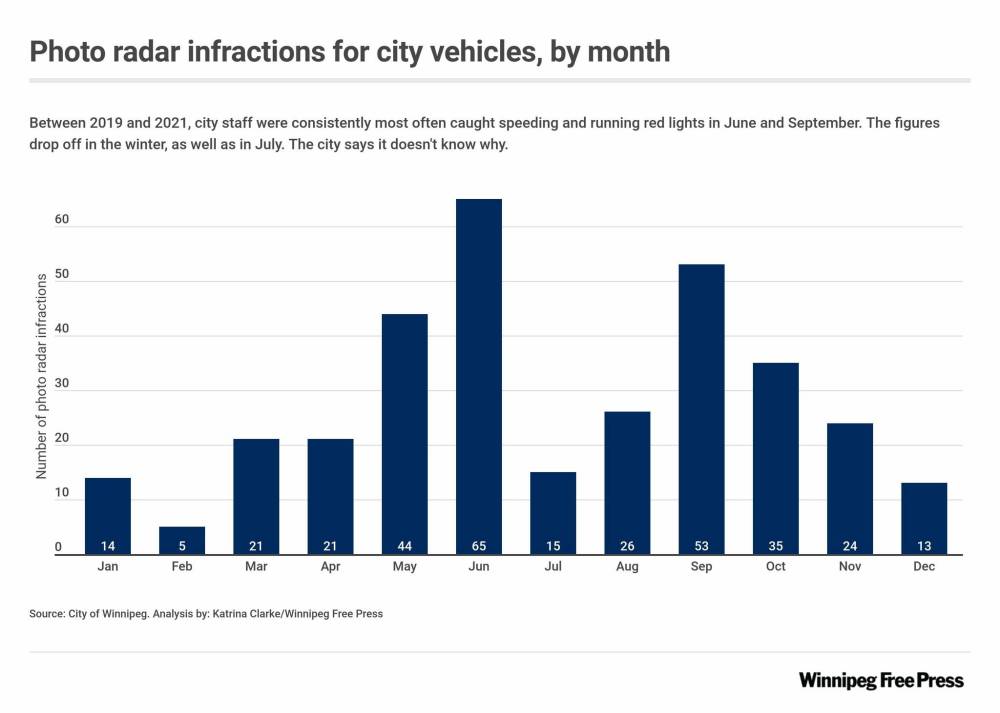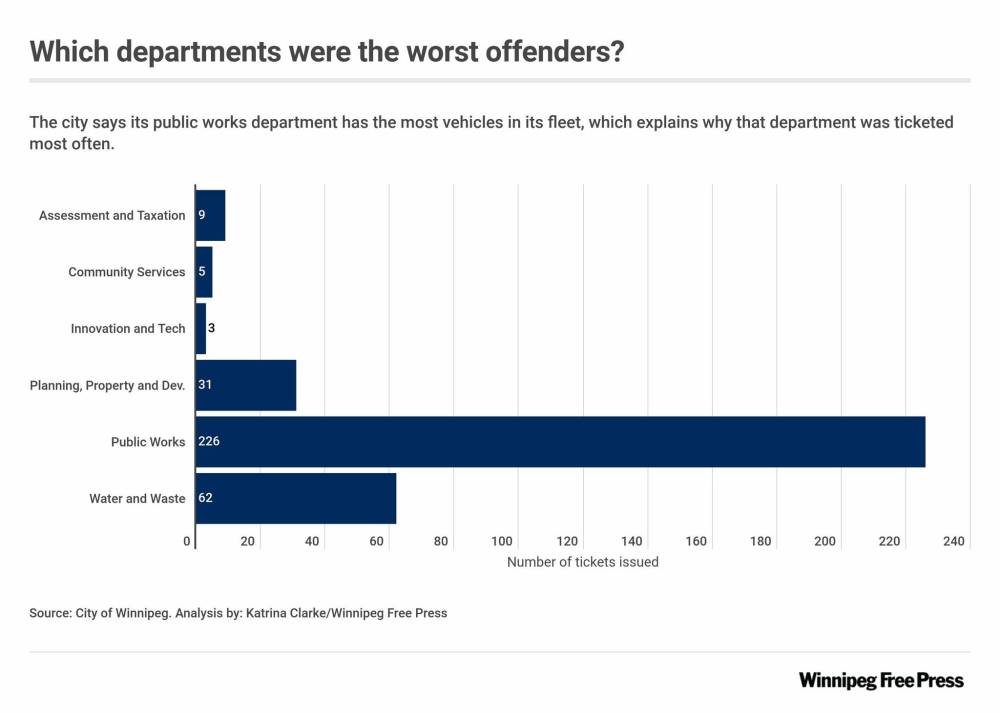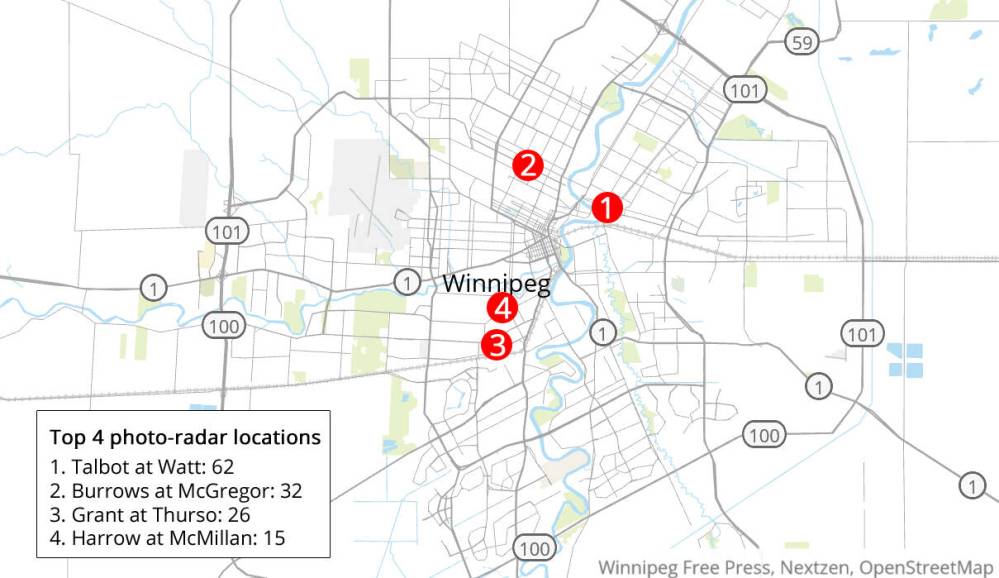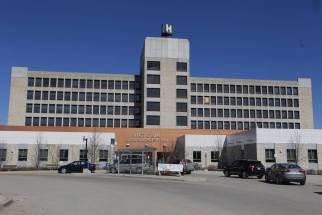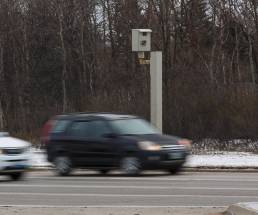Picture gets blurry when city staff caught by traffic cameras Red-light running, speeding employees generally asked to pay tickets, but civic department heads can choose to look the other way
Read this article for free:
or
Already have an account? Log in here »
To continue reading, please subscribe:
Monthly Digital Subscription
$0 for the first 4 weeks*
- Enjoy unlimited reading on winnipegfreepress.com
- Read the E-Edition, our digital replica newspaper
- Access News Break, our award-winning app
- Play interactive puzzles
*No charge for 4 weeks then price increases to the regular rate of $19.00 plus GST every four weeks. Offer available to new and qualified returning subscribers only. Cancel any time.
Monthly Digital Subscription
$4.75/week*
- Enjoy unlimited reading on winnipegfreepress.com
- Read the E-Edition, our digital replica newspaper
- Access News Break, our award-winning app
- Play interactive puzzles
*Billed as $19 plus GST every four weeks. Cancel any time.
To continue reading, please subscribe:
Add Free Press access to your Brandon Sun subscription for only an additional
$1 for the first 4 weeks*
*Your next subscription payment will increase by $1.00 and you will be charged $16.99 plus GST for four weeks. After four weeks, your payment will increase to $23.99 plus GST every four weeks.
Read unlimited articles for free today:
or
Already have an account? Log in here »
Hey there, time traveller!
This article was published 06/05/2022 (1311 days ago), so information in it may no longer be current.
More than 330 City of Winnipeg vehicles were caught on camera running red lights or speeding over the last three years, city data shows.
But it’s not clear how many city employees paid the tickets, nor how many — if any — were disciplined for the infractions.
Intersection cameras and mobile photo-radar caught 136 city vehicles violating traffic laws in 2019, 90 in 2020 and 110 in 2021, according to the data provided by the city to the Free Press. It does not break down the details of the offences, including whether they involved speeding, the rate of speed or running a red light, nor if any drivers were repeat offenders. The data also doesn’t include emergency vehicles.
And while a spokesperson for the city said the administration tries to ensure employees pay up, that information is tracked by department, and directed the Free Press to file a freedom of information request if it sought a further breakdown.
On paper, at least, it appears Winnipeg cracks down harder on scofflaw staff than other major Canadian cities. City employees in at least two Ontario cities, Hamilton and Ottawa, don’t have to pay photo-enforcement tickets.
By the numbers:
• 24 city-vehicle infractions were captured in June 2020, making that the month with the most violations over a three-year period.
• 49 intersection safety-camera locations exist in the city, with 33 cameras rotated through the locations.
• 10 mobile photo-radar units catch speeding drivers in school, playground and construction zones.
• Most of the infractions are caught by the mobile units, accounting for 75,598 in 2020 while; intersection cameras nabbed 33,856 vehicles.
• Of the infractions captured on intersection safety cameras in 2020, 7,470 were for red-light offences and 26,386 were for speeding.
• $203 is the cost of a ticket for a red-light infraction caught on camera.
• Speeding fines can range from $181 for going 10 km/h over the limit to thousands of dollars for more serious offences.
Todd MacKay, the Canadian Taxpayers Federation’s prairie director, said Winnipeg does the right thing by not giving staff a free pass.
“The rules have to be the same for everybody,” MacKay said. “When some cities are looking the other way for their employees, that suggests to a lot of us that it’s more about money than safety.”
Still, he said the city should be transparent about how many employees pay up.
According to the city, the corresponding department is responsible for investigating the infraction and determining who “had care and control of the vehicle.”
If there is no dispute, the department pays the fine and tells the employee to reimburse the department. There are occasions where the department head “may consider the circumstances and waive the requirement for the employee to reimburse the city,” city spokesperson Kalen Qually said in an email.
If the employee is still ordered to pay but refuses, they may face disciplinary action. Employees may also face discipline for the infraction itself, “for failure to demonstrate proper diligence in the safe operation of a city vehicle or motive equipment,” he said.
The city won’t say how many, if any, staff have been disciplined or fired for infractions, citing human resources confidentiality.
Public works vehicles racked up the most infractions, with 226 — two thirds of the total 336 violations — followed by water and waste with 62 and planning, property and development with 31. Public works, with 820 vehicles, makes up the bulk of the roughly 1,300 non-emergency vehicles in the city’s fleet.
While all police vehicles are exempt from photo enforcement, it’s not the same across the board for Winnipeg Fire and Paramedic Service.
“When a WFPS light fleet vehicle generates a photo-radar ticket, an investigation takes place to determine whether the vehicle was responding to an emergency incident,” said WFPS spokesperson Erin Madden. “If it was responding to an emergency, the ticket is waived. If the light fleet vehicle was not responding to an emergency incident, the employee driving is responsible for the cost of the ticket.”
In 2019, no tickets were issued to WFPS employees. In 2020 and 2021, eight tickets were issued each year, at a cost of $1,699 and $2,207, respectively. The employees responsible paid the tickets.
When compared to overall numbers, Winnipeg’s city vehicles make up a fraction of how many are caught on camera. About 129,000 total vehicles were flagged for photo infractions in 2019 and 109,500 in 2020, according to police data. Police attribute the 15 per cent drop to less overall traffic because of the pandemic.
That means city staff made up just 0.1 per cent of all 2019 infractions and 0.08 in 2020.
However, to get a true sense of the significance of the city violations, it would be necessary to know how many drivers are on Winnipeg roads and how frequently they’re driving, and compare that to the city’s fleet and their driving frequency, said David Shellnutt, a Toronto-based personal injury and human rights lawyer who advocates for safer streets.
City staff should be setting the gold standard when it comes to following the traffic rules it expects its own citizens to follow, Shellnutt said.
“If (city employees) don’t lead by example, certainly nothing will change,” he said.
While Shellnutt is a proponent of traffic cameras, he describes such systems as “one good tool in multi-pronged approach” to street safety. Also needed is public education, better infrastructure on roadways, strict penalties for dangerous and careless drivers and better driver education or re-training.
Public works rejects mismanagement allegations

Posted:
Winnipeg’s public works department responded publicly for the first time Thursday to allegations of financial mismanagement within the traffic signals branch at a special meeting of the city’s finance committee.
“We can’t ticket our way out of this,” he said.
He would like to see cities reinvest the revenue from traffic cameras into making streets safer. Winnipeg Police Service, which oversees the photo-enforcement system, says the revenue is put toward the force’s “general revenue.”
The photo-radar system and related street-safety issues have long been controversial topics in Winnipeg.
A February Free Press investigation revealed gaps and flaws in the city’s management of infrastructure and street-safety enforcement. Critics specifically pointed to issues with amber-light times and speed-limit signs not meeting Canadian standards as evidence that photo-enforcement is about making money, not keeping streets safe.
The city adamantly rejected the charges.
Regardless, certain areas remain photo ticketing hot spots.
Talbot Avenue east of Watt Street is one such location. It’s where more than 60 of the city-vehicle infractions took place, accounting for 18 per cent over the three-year period.

“There’s no reason we shouldn’t be using technology to make streets safer.”– Ian Walker
It’s not just city vehicles getting dinged there.
“That’s where my wife got a ticket,” Winnipegger Ian Walker said with a laugh.
Top spots city vehicles were caught
Eastbound Talbot Avenue at Watt Street: 62
Westbound Burrows Avenue at McGregor Street: 32
Westbound Grant Avenue at Thurso Street South: 26
Southbound Harrow Street at McMillan Avenue: 15
Despite the hit to his family’s pocketbook, Walker is still a big fan of photo-radar enforcement. He’s chair of Safe Speeds Winnipeg and in favour of most measures that force or convince drivers to slow down and drive safely.
“Speed is a killer,” he said. “There’s no reason we shouldn’t be using technology to make streets safer.”
It might take a ticket or two to force people to confront their unsafe driving, he said. And he imagines that for city staff, it doesn’t look very good when your employer knows you’re speeding around town and running red lights. Hopefully it forces all drivers to change bad habits, he said.
Still, Walker said if certain areas routinely remain ticket hot spots, the city should “absolutely” consider changing infrastructure or posting better signage.
“The opportunity for people to be hurt by vehicles should be eliminated,” he said.
katrina.clarke@freepress.mb.ca

Katrina Clarke is an investigative reporter with the Winnipeg Free Press.
Our newsroom depends on a growing audience of readers to power our journalism. If you are not a paid reader, please consider becoming a subscriber.
Our newsroom depends on its audience of readers to power our journalism. Thank you for your support.

